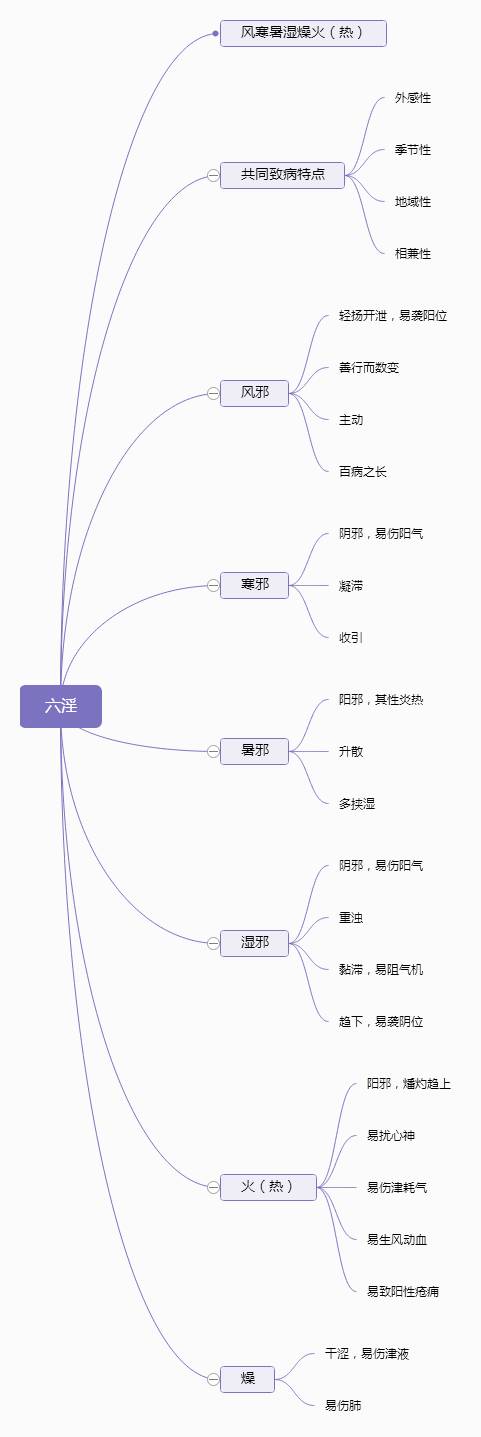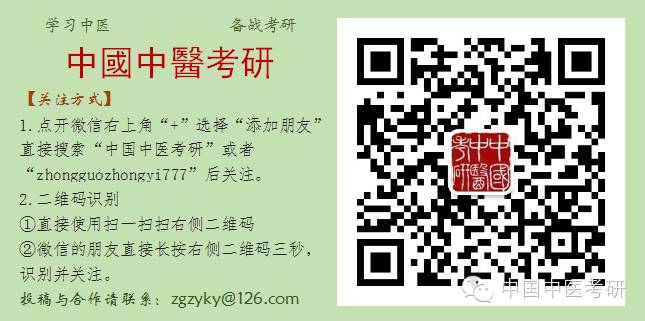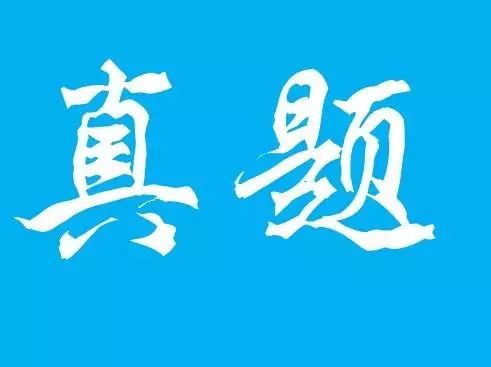Among the following options, which does not belong to the characteristics of the Six Excesses causing disease?
A. Seasonal
B. Regional
C. Coexisting
D. Infectious

The Six Qi: The so-called Six Qi, also known as the Six Elements, refers to the six types of normal climatic conditions in nature: Wind, Cold, Heat, Dampness, Dryness, and Fire.
The Six Excesses: The term Six Excesses refers to the collective name for the six types of external pathogenic factors: Wind, Cold, Heat, Dampness, Dryness, and Fire.
General Characteristics of the Six Excesses Causing Disease
1. External pathogenicity
2. Seasonality
3. Regionality
4. Coexistence
Nature and Pathogenic Characteristics of the Six Excesses
1. Wind
(1) Characteristics: Wind has the properties of lightness, dispersion, and movement.
(2) Basic Characteristics: Wind is light and dispersive, changes frequently, and is proactive, being the leader of all diseases.
① Lightness and Dispersion: Wind is a Yang pathogen, characterized by lightness and upward movement, which easily affects the upper body and the Yang areas such as the skin and waist.
The Lung is the cover of the five organs and six bowels; if harmed, it leads to symptoms such as nasal congestion, runny nose, throat itch, and cough.
When Wind disturbs the head and face, symptoms such as dizziness, headache, neck stiffness, facial paralysis, and crooked mouth may occur.
Wind invading the muscle surface can lead to symptoms like fear of wind and fever.
Due to its dispersive nature, Wind can invade the muscle surface, causing the pores to open, leading to symptoms such as profuse sweating and aversion to wind.
② Frequent Movement and Change: Wind is characterized by its ability to move and change frequently, leading to symptoms that can shift locations.
For example, wind rash and urticaria can appear and disappear unpredictably;
Wind Bi (Wind Pain) can cause migratory joint pain in the limbs.
“Frequent change” refers to the sudden onset and variability of Wind-related diseases.
For instance, wind rash and urticaria can appear intermittently,
while conditions like epilepsy and stroke can lead to sudden fainting and loss of consciousness.
Generally, these conditions exhibit rapid onset, frequent changes, and quick transmission.
③ Proactive Nature: “Proactive nature” refers to the characteristic of Wind pathogens to cause instability.
Common manifestations include dizziness, tremors, limb convulsions, opisthotonos, and upward gaze, hence the saying “when Wind prevails, movement occurs.” For example, in external heat diseases, “extreme heat generates Wind,” and in internal injuries, “Liver Yang transforms into Wind” or “Blood deficiency generates Wind” are all manifestations of Wind disturbance.
④ Wind as the Leader of All Diseases:
Wind often combines with other pathogens to cause harm; it is the most common cause of disease.
2. Cold
(1) Characteristics: Cold has the properties of coldness, condensation, and contraction.
(2) Basic Characteristics: Cold pathogens are characterized by coldness, stagnation, and contraction.
① Cold is a Yin pathogen that easily harms Yang Qi:
“When Yin is excessive, it leads to Cold,” and “when Yin is excessive, it causes Yang diseases.”
For example, if Cold binds the surface, it obstructs the Yang Qi, leading to symptoms such as aversion to cold, fever, and absence of sweating, known as “Cold Damage.”
If Cold penetrates deeply, harming the internal organs’ Yang Qi, it is referred to as “Internal Cold.”
For instance, if it harms the Spleen and Stomach, it can lead to symptoms such as vomiting, diarrhea, and abdominal pain;
if it affects the Lung and Spleen, it can cause coughing, shortness of breath, and clear phlegm or edema;
if it harms the Spleen and Kidney, it can lead to symptoms such as aversion to cold, cold limbs, low back pain, clear urination, and watery diarrhea;
if the Heart and Kidney Yang is deficient, Cold can penetrate the Shaoyin, leading to symptoms such as aversion to cold, curled up posture, cold extremities, clear diarrhea, mental fatigue, and thin pulse.
② Cold Causes Stagnation:
Pain is a significant feature of Cold pathogens.
If Cold invades the muscle surface, it can cause severe pain in the head, body, and joints;
if Cold penetrates deeply, it can lead to cold pain or cramping in the chest, abdomen, and other areas.
③ Cold Causes Contraction:
Cold pathogens can cause Qi to contract, obstructing the pores and causing the meridians and muscles to tighten;
if Cold invades the joints, it can lead to tightness and pain, making movement difficult or causing numbness;
if Cold invades the muscle surface, it can cause the pores to contract, leading to fever and aversion to cold without sweating.
Cold corresponds to the Kidney. Cold is water Qi, which connects to the Kidney. If Cold invades, it can lead to reduced urination and edema; if excessive Cold water obstructs the Heart Fire, it can lead to heart pain, palpitations, and cold extremities.
3. Heat
(1) Characteristics: Heat is a fire-like pathogen.
(2) Basic Characteristics: Heat is transformed from fire, primarily ascending and dispersing, often accompanied by dampness.
① Heat is Inflammatory:
Heat pathogens often manifest with a series of Yang heat symptoms, such as high fever, irritability, flushed face, restlessness, and a strong pulse, known as Heat Damage (or Summer Heat).
② Heat is Ascending and Dispersing: Ascending and dispersing refer to the tendency of Heat to rise and spread.
Heat easily invades the head and disturbs the heart, as it can directly enter the Heart; it also easily harms fluids and depletes Qi.
As a Yang pathogen, Heat tends to rise, so it often invades the Qi level, leading to profuse sweating. Excessive sweating can deplete fluids, leading to symptoms such as thirst, dry lips, and scanty, dark urine.
During excessive sweating, Qi may also be lost, leading to symptoms of shortness of breath and fatigue, and in severe cases, sudden fainting.
Heat can also cause extremities to feel cold, known as Heat Collapse. Heat can stir Liver Wind, leading to symptoms such as limb convulsions, neck stiffness, and even opisthotonos.
Heat not only depletes Qi and fluids but can also disturb the heart, causing irritability and restlessness.
③ Heat Often Accompanies Dampness:
Heat often combines with dampness, leading to clinical features that include fever, thirst, and other heat symptoms, often accompanied by fatigue in the limbs, chest tightness, nausea, and loose stools.
4. Dampness
(1) Characteristics: Dampness is heavy, turbid, sticky, and tends to descend.
(2) Basic Characteristics:
Dampness is a Yin pathogen that obstructs Qi, easily harming Yang Qi, characterized by heaviness, turbidity, stickiness, and a tendency to descend.
① Dampness is a Yin pathogen that obstructs Qi and harms Yang Qi:
The chest and flanks are pathways for Qi to ascend and descend; if Dampness obstructs the chest, it can lead to chest tightness;
Dampness can hinder the Spleen and Stomach, leading to symptoms such as loss of appetite, abdominal distension, and loose stools.
If Dampness invades the body, it can hinder the Spleen, leading to symptoms such as diarrhea, edema, and reduced urination.
“When Dampness prevails, Yang is weak,” as Dampness is a Yin pathogen that can easily harm Yang Qi. To resolve Dampness, methods to promote Qi and drain Dampness through urination should be employed.
② Dampness is Heavy and Turbid: Clinical symptoms of Dampness include a heavy sensation, such as heaviness in the head and body, and aching limbs.
If Dampness invades the muscle surface, it can lead to head heaviness and a feeling of being wrapped;
if it stagnates in the meridians and joints, it can lead to numbness and heavy joint pain.
The term “turbid” refers to filth and uncleanliness.
Thus, when Dampness is present, it often leads to unclean excretions and secretions.
For example, if Dampness is in the upper body, it can lead to facial dirt and excessive eye discharge;
if it stagnates in the large intestine, it can lead to loose stools, diarrhea with pus and blood;
if it descends, it can lead to cloudy urine and excessive vaginal discharge;
if it invades the skin, it can lead to sores, eczema, and pus-filled lesions.
③ Dampness is Sticky:
“Sticky” refers to the quality of being viscous; “stagnation” refers to obstruction. The sticky nature of Dampness manifests in two main aspects:
First, the symptoms are sticky. Dampness-related symptoms are often sticky and uncomfortable, such as sticky stools, difficult urination, and viscous secretions.
Second, the course of the disease is prolonged. Due to the sticky nature of Dampness, it can be difficult to resolve, leading to a slow onset and prolonged course, often resulting in recurring or lingering conditions.
For example, Damp-Heat, eczema, and Damp Bi (Damp Pain).
④ Dampness Tends to Descend:
Dampness is similar to water, heavy and turbid, thus it tends to descend and can easily affect the lower parts of the body. Symptoms often manifest in the lower body, such as edema, especially in the lower limbs.
Other symptoms such as vaginal discharge, cloudy urine, diarrhea, and dysentery are also often caused by Dampness descending.
However, Dampness can invade both the upper and lower parts of the body, as well as internally and externally, not limited to the lower body. The saying “those harmed by Dampness first suffer in the lower body” from the Su Wen merely indicates that Dampness tends to descend, easily affecting Yin areas, which is one of its characteristics.
5. Dryness
(1) Characteristics: Dryness has the properties of being dry, astringent, and clearing.
(2) Basic Characteristics: Excessive Dryness leads to dryness, which easily harms the Lung, being the basic feature of Dryness pathogens.
① Dryness Harms Fluids:
Dryness is transformed from the autumn’s withering Qi, characterized by dryness and depletion, hence the saying “excessive Dryness leads to dryness.”
Dryness can easily deplete the body’s fluids, leading to various symptoms and signs of fluid deficiency, such as dry skin, cracked lips, dry throat, dry mouth, dry hair, reduced urination, and constipation.
② Dryness Easily Harms the Lung:
The Lung is the cover of the five organs and six bowels, preferring moistness and disliking dryness, hence it is called the delicate organ. The Lung governs Qi and respiration, directly connecting with the external atmosphere, and is associated with the skin and nose. Dryness often enters through the mouth and nose. As Dryness is the main Qi of autumn, it corresponds to the Lung, making it particularly harmful to the Lung.
Dryness invading the Lung can damage Lung fluids, leading to symptoms such as dry cough with little phlegm, or phlegm that is difficult to expectorate, or blood-streaked phlegm, and chest pain.
6. Fire (Heat)
(1) Characteristics: Fire has the property of being hot.
(2) The nature and pathogenic characteristics of Fire: Fire has the properties of burning, inflammation, depleting Qi and fluids, and stirring Wind and blood.
① Fire is Burning:
Fire pathogens primarily manifest as excessive Yang Qi, clinically presenting with high fever, aversion to heat, and a rapid pulse as signs of heat excess. In summary, Fire heat is a disease characterized by significant heat symptoms, including fever and rapid pulse.
② Fire is Inflammatory:
Fire is a Yang pathogen, characterized by its tendency to rise. Therefore, Fire pathogens often exhibit significant inflammatory characteristics, primarily affecting the upper body.
For example, if Heart Fire is blazing, symptoms may include red, painful tongue tips, oral ulcers, and sores;
if Liver Fire is blazing, symptoms may include severe headaches and red, swollen eyes;
if Stomach Fire is excessive, symptoms may include swollen gums and bleeding gums.
③ Depletes Fluids and Qi:
In addition to significant heat symptoms, Fire often accompanies symptoms of thirst, dry throat, scanty, dark urine, and constipation.
Qi is generated from water, and water can transform into Qi; when Fire forces fluids to leak, the deficiency of fluids can also lead to Qi deficiency.
For instance, when Fire heat is excessive, along with significant heat, sweating, and thirst, one may also see shortness of breath, fatigue, and weakness. In summary, Fire pathogens can either directly harm the body’s righteous Qi or cause Qi deficiency due to fluid depletion, ultimately leading to a pathological result of fluid depletion and Qi exhaustion.
④ Causes Wind and Moves Blood:
Fire pathogens can easily stir internal Wind and cause blood to move erratically.
Stirring Wind: When Fire heat invades the body, it often burns the Liver channel, depleting fluids and blood, leading to internal Wind movement, known as “extreme heat generates Wind.” When Wind and Fire combine, symptoms can be acute, clinically presenting as high fever, confusion, convulsions, neck stiffness, opisthotonos, and upward gaze.
Moving Blood: Blood coagulates in cold and flows in heat. Fire heat can burn the vessels and accelerate blood flow, easily causing various bleeding symptoms such as hemoptysis, epistaxis, hematochezia, hematuria, and skin purpura, as well as excessive menstruation and uterine bleeding.
⑤ Easily Causes Abscesses:
Fire heat entering the blood level can accumulate locally, leading to necrosis and pus formation. “Abscesses originate from Fire toxicity.” “Fire toxicity” and “heat toxicity” are common causes of abscesses, clinically characterized by localized redness, swelling, heat, and pain.
⑥ Easily Disturbs the Spirit:
Fire corresponds to the Heart Qi, which governs blood vessels and houses the spirit. Therefore, when Fire pathogens harm the body, they easily disturb the spirit, leading to symptoms such as irritability, insomnia, agitation, and even confusion and delirium.
Correct Answer: D. Infectious should be a characteristic of pestilential Qi.
Characteristics of Pestilential Qi:
1. Sudden onset, severe condition
2. Highly infectious, easily spreads
3. One Qi, one disease, similar symptoms


